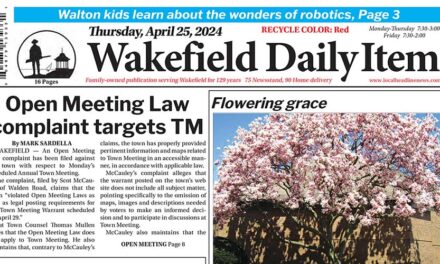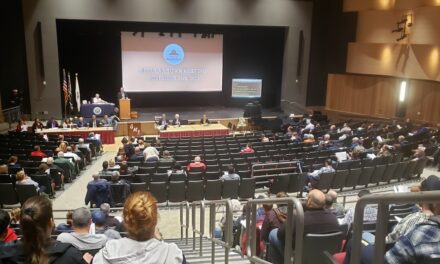Published in the October 22, 2020 edition.
By MARK SARDELLA
Out-of-state donors are pouring millions into an effort to forever alter the outcomes of Massachusetts elections.
Unfortunately for them, the concept of ranked choice voting is so convoluted that it can’t be convincingly explained in a one-minute TV ad or even with an oversized, glossy, two-sided mailer.
That’s one reason why the “NO on Question 2” campaign is running neck and neck with the carpetbagging financiers of the “Yes” campaign — despite being grossly outspent by these blow-in, would-be election-fixers.
You probably got the 9×13-inch color mailer with the picture of the young woman sporting the “I voted” sticker while holding her nose and grimacing as if she just stepped off the elevator at a baked bean factory. (Poor thing. She probably had to vote for some yucky male. Eww!)
The flyer informs us that by voting “Yes” on Question 2, “you’ll never have to chose between the lesser of two evils again.”
Then the flyer proceeds to tell this whopper. “Ranked choice voting is a simple, fair, and easy way to give voters more choice and more voice in our elections.”
Whenever someone describes a concept as is both “simple” and “easy,” prepare yourself for something that’s beyond complicated and confusing.
Who is supporting the campaign that’s paying for all those expensive TV commercials, radio ads and fancy mailers?
As of Oct 5, “Voter Choice for Massachusetts,” the campaign supporting a “Yes” vote for ranked choice voting, had received $7.9 million in contributions. The top contributor ($2.9 million) is listed as the “Action Now Initiative,” based in Houston and founded by Texas billionaire power couple John and Laura Arnold. John Arnold became a billionaire as a hedge fund manager at his own firm, Centaurus Advisors. He began the firm in 2002, after his former employer, Enron, went bankrupt. Arnold retired in 2012 at the age of 38.
So, as you can see, the Arnolds are just regular folks. From Texas.
Despite having raised nearly $8 million, Shauna Hamilton from Voter Choice for Massachusetts wrote the following (presumably with a straight face) in the red Voter Information booklet put out by the Secretary of State’s Office.
“Big money and corrupt special interests have too much control over our democracy.”
You don’t need to tell the “No Ranked Choice Voting Committee,” which as of Oct. 5 had raised less than $3,000.
And yet, despite a 1,000-1 fundraising advantage, the pro-ranked choice side hasn’t been able to put away their underfunded opponents. Massachusetts voters remain evenly split on the issue, according to recent polling. That’s how unappealing the idea of ranked choice voting is.
I’m not here to explain ranked choice voting to you. That’s the job of the slickest advertising firms $8 million can buy. But essentially, it allows some people to vote multiple times until one candidate has a “majority.”
Let’s say that John Smith, Bob Jones and Jane Doe are running in a three-way race. Voters rank the candidates in order of preference. If one of them gets more than 50 percent of the first-place votes, he wins. But in the far more likely scenario where no one gets more than 50 percent, that’s when the ranked choice system kicks in.
Let’s say that John Smith got 43 percent of the first-place votes, Bob Jones got 42 percent and Jane Doe, a victim of systemic sexism, got 15 percent.
In that case, the last place finisher, Ms. Doe, would be eliminated and the second-place votes on the ballots that had picked her as their first choice would be counted and redistributed between Smith and Jones, presumably pushing one of them over the magic 50 percent.
Ranked choice advocates deny it, but in the preceding example, those who voted for the last place candidate just voted twice. Under a normal election, those who voted for Jane Doe or Bob Jones came up short. Their candidates lost. Game over. Better luck next time.
But under ranked choice voting, those who voted for the last place finisher, Jane Doe, get a do-over. They effectively get to vote again to determine the winner.
Simple, right?
Or how about this system: one person, one vote. The candidate with the highest vote total wins.
If the latter sounds a lot like the system we have now, it’s because it is. It really is simple and easy for people to understand – the way voting should be. And it’s been working pretty well for the last 200 or so years.
Many of those who are pushing ranked choice voting are the same people who are always screaming that we have to make voting “easier.” Yet here they are, advocating for a system that many voters find baffling, because it is.
Keep voting simple. Just say “NO” to ranked choice voting.




